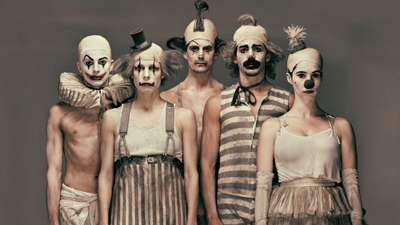
StageTalk Magazine has always been an enthusiastic devotee of contemporary dance. In the UK we are well served with several outstanding companies but one of the vanguards of modern dance was, perhaps surprisingly, Dutch.
Founded in 1959 by Benjamin Harkarvy, Aart Verstegen and Carel Birnie, together with other members of the Dutch National Ballet, the Nederlands Dans Theater revolutionised the ballet world and have since become one of the foremost and most respected contemporary dance companies in the world.
I first saw the NDT at Sadler’s Wells in London a few years ago and became an instant fan. So, the opportunity of seeing them again while I was on a recent visit to Holland was not one I was going to miss.
Their permanent base, the Lucent Danstheater in the centre of The Hague, is in the midst of a major redevelopment, so for the next two or three years the company will be playing their home matches, when not touring the world, at the Zuiderstrand Theatre in the city’s adjacent seaside resort of Scheveningen. I say in Scheveningen but the fact is, the theatre is some way out of town, located behind a remote sand dune, miles it seems, from anywhere – except for the port where big ships are tied up a few yards away – very handy for visiting sailors wanting a cultural night out.
But it was the dance I had come to see with high expectations, and I wasn’t disappointed. Choreographer Crystal Pite’s double bill The Statement and Parade are in fact two sides of the same coin. When it was decided to revisit Parade, which premiered in 2013, Ms Pite was keen to explore the theme of conflict from a different angle and The Statement was created. Although very different in concept and presentation the two works merge seamlessly into one.
In some remote location a war is taking place and in The Statement four be-suited officials try to distance their government’s involvement in it and try to create a positive spin. A board-room table stands alone in the middle of the giant, bare stage. There is no music, it is danced to the dialogue between the four characters – it is literally an animated conversation. The immediate impression was almost Beckett-like, almost theatre of the absurd. Each of bureaucrats in turn postures and cowers, asserts and justifies, each fearing the wrath of those more senior figures on the floors above. The dancing was superb and the excellent lighting by Tom Visser managed to echo the confidence and despair which in turn ripple through the meeting before one of the four is hung out to dry.
From the stark, absurdist setting of The Statement, Parade takes us to the surreal, almost Fellini-like world of the conflict itself. The sombre grey suits are superseded by garish circus costumes as we meet a troupe of rather grotesque clowns living happily in a very small tent preparing a birthday celebration, complete with cake and fairy lights. However, the festivities are interrupted by the arrival of a band of toy-town soldiers and their incompatibility results in conflict. The climax is almost Shakespearean with a battlefield strewn with bodies.
It is then that we meet our friends from The Statement again, but this times as puppets. In a cell after the interrogation of “the guy” we met earlier, the officials are still trying to make the best of a bad job as a photographer struggles to get an acceptable picture of the brutally tortured prisoner. This scene worked particularly well and nicely linked the two pieces. I also liked the chorus line of rubber chickens in their victory celebrations.
Although both pieces were outstanding, I think I enjoyed The Statement slightly more than Parade. I liked its boldness and simplicity and the translation of the dialogue into movement was brilliantly done. Loved every moment. ★★★★★ Michael Hasted 8th June 2017

